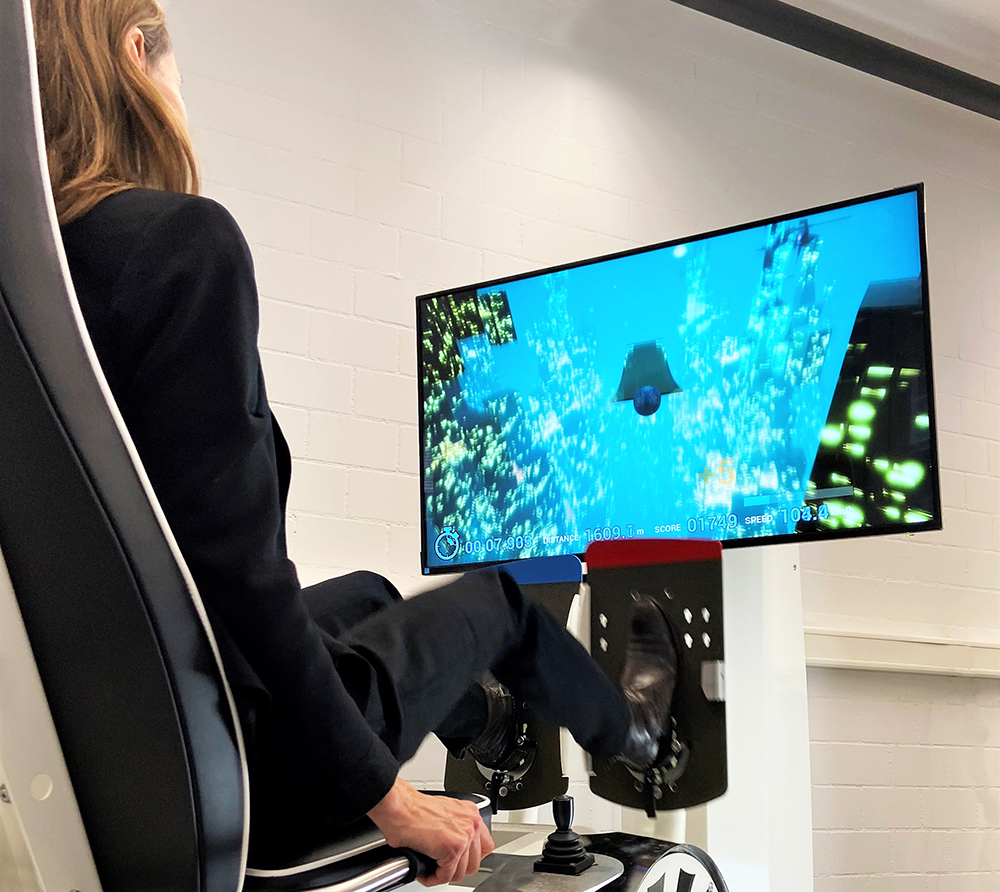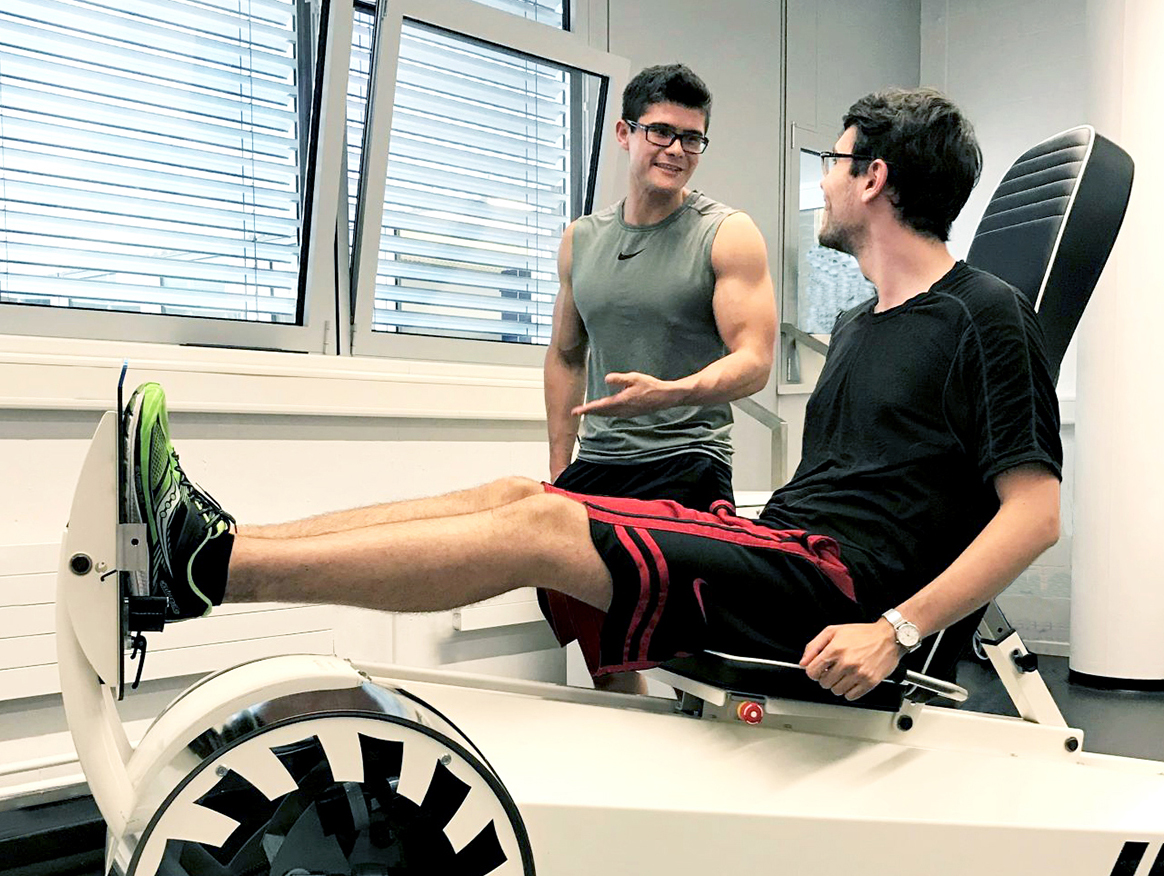Happy and healthy employees are motivated and productive.
They take fewer sick days off work and are more likely to stay with a company for longer.
In recent years, an increasing number of companies have implemented workplace well-being programmes, which aim to improve their employees’ physical and mental health.
Companies with high levels of well-being report:
- employee engagement that is two times higher than other companies
- a 70 per cent lower number of stressed employees
- less absenteeism
- reduced healthcare costs. (1)
Under well-being programmes, employees are often given easy access to on-site gyms and/or exercise classes. If more companies were to encourage their employees to exercise regularly at work, their investment would reap monetary rewards. According to an analysis by RAND Europe, if people were more physically active, the world’s total Gross Domestic Product (GDP) could increase by between US$138 billion and US$338 billion by 2025. (2)
However, despite attempts by some companies to improve the well-being of their workforce, many employees still feel as if they don’t have any time to exercise, especially during a busy working day.
In fact, levels of stress and burnout are at an all-time high. A staggering 77 per cent of survey respondents said that they had suffered from burnout in their current job, with over 50 per cent experiencing burnout more than once. (3)
There is no doubt that more needs to be done to improve morale and reduce stress-related conditions at work.
Could regular resistance or strength training help improve people’s mood, fitness and self-esteem, thereby improving their overall well-being at work? Would some of the knock-on effects for employers be increased productivity and fewer sick days?
Below are some reasons to improve well-being at work by allocating a small amount of time for resistance training.
Better Health and Less Time off Work
Affecting an estimated 264 million people worldwide, depression and anxiety cost the global economy a staggering US$1 trillion each year in lost productivity, according to the World Health Organisation. (4)
The good news is that resistance training can alleviate depression and anxiety. An analysis of 33 randomized clinical trials with over 1,800 participants discovered that those with mild to moderate depression reported a significant reduction in their symptoms after resistance training twice or more a week, compared with people who did not train. (5)
Resistance training can also reduce the risk of a heart attack or stroke by between 40 and 70 per cent, according to a study by Iowa State University. Interestingly, the study discovered that less than an hour a week of strength training was enough and that training for longer did not reduce the risk to a greater extent.
The researchers also discovered that up to one hour a week of resistance training lowers your risk of developing high cholesterol by 32 per cent and of metabolic syndrome (a condition that increases the risk of diabetes, strokes and heart attacks) by 29 per cent. (6)
Preventing cardiovascular disease saves companies money. On average, an employee with cardiovascular disease is off sick for more than one week each year. In terms of lost productivity, an employee with cardiovascular disease costs their employer US$1,100 more than an employee without the disease each year, according to the American Heart Association. (7)
In Denmark, taking part in intelligent physical exercise training during working hours improved the health of people in a variety of occupations, including dentists, office workers, healthcare personnel and helicopter pilots. The beneficial effects included:
- reduced neck pain
- improved muscle strength
- better cardio-respiratory fitness
- lower body mass index
- higher levels of productivity at work. (8)
Develop a Stronger Body that Will Age Well
Resistance training helps adults build stronger bodies. A study by Quincy College in the USA measured the specific benefits of a 10-week programme of resistance training on the human body. These were:
- An increase of 7 per cent in volunteers’ resting metabolic rate
- An increase of 1.4 kg in lean body mass
- A decrease of 1.8 kg in fat mass
- Bone mineral density increasing by between 1 and 3 per cent.
People who sit in an office chair for long periods of time often complain of lower back pain. Resistance training can strengthen the body and help alleviate this pain. (9)
Strength training also increases your muscle strength, which is particularly important as you get older because it helps you get out of a chair, climb up stairs and pick up heavy things (see ddrobotec Health Tech Blog from November 15, 2019).
It may also help you live longer. According to a study published by the European Society of Cardiology, older people with maximal muscle strength above the median for their gender were less likely than others to die over a six-and-a-half-year period. (10)
Reduce Weight Gain
Since trained muscle requires more energy than untrained muscle, people who do resistance training not only have stronger bodies but are less likely to put on weight.
A strength training session increases a person’s calorie needs for up to 72 hours afterwards and their muscles burn more calories even when they are resting.
One pound of trained muscle needs about nine calories a day, compared with five or six calories for a pound of untrained muscle, according to Dr. Edward Phillips, assistant professor of physical medicine and rehabilitation at Harvard Medical School. (11)
Better Job Performance
Researchers at the University of Bristol and Leeds Metropolitan University in the UK found that on the days when people with sedentary jobs exercised during their working day, their job performance improved in the following ways:
- Better relationships with co-workers (79 per cent)
- Improved management of their workload (74 per cent)
- Better time management (72 per cent).
On exercise days, participants said that their overall motivation to work was 41 per cent higher than on days when they did not exercise. On exercise days, they were also 22 per cent more likely to complete work on time and their concentration was 21 per cent sharper. They also reported taking fewer unscheduled work breaks.
The volunteers took part in different types of exercise, with most of the volunteers either going to a gym or an exercise class. Some did weight training, while others participated in team-based sports. Most participants took part in moderate to high intensity exercise lasting up to 45 minutes. (12)
More Energy and a Feeling of Well-being

A lot of energy is needed to get you through a long and demanding working day. Some people drink caffeine and/or eat sweet snacks to keep their energy levels high, but such habits have a detrimental effect on health over time. A much healthier way to boost your energy is to exercise, preferably before or during the working day.
In the study carried out by the University of Bristol and Leeds Metropolitan University (see above), even those people who didn’t notice any improvement in their job performance reported higher energy levels after exercise.
These participants also noticed an improvement in their mood after exercise. This contrasted with their mood either staying the same or their feeling of calmness worsening during non-exercise days.
Resistance training was one of the types of exercise people in the study participated in. It releases dopamine, norepinephrine and other brain chemicals that make people feel good. (13)
Reduce Stress and the Risk of Burnout
A survey of 2,000 adults in the UK found that 85 per cent felt stressed regularly. Work was the second-largest cause of stress (after money). (14)
Long-term stress can lead to burnout, which is defined as “a chronic state of job stress, where employer expectations and employee workload exceed the individual’s perceived psychological capacity and ability to cope with the work demands expected of them.” (15)
Burnout is a much more serious condition, which leads to people taking a lot of time off work to recover.
An Australian study compared the effects of separate four-week programmes of resistance training and cardiovascular exercise with a control group who did not exercise.
At the beginning of the study, 37.6 per cent of those who exercised were assessed as having high burnout, with 27.9 per cent having medium burnout and 34.5 per cent low burnout. After the exercise programmes, burnout levels had changed to 14.9 per cent with high burnout, 41.2 per cent with medium burnout and 43.9 per cent with low burnout.
The burnout levels of the people in the non-exercising control group remained the same over the four-week period.
The study found that resistance training was particularly effective in improving personal accomplishment. Resistance training had similar results to cardiovascular exercise in the areas of enhancing positive well-being and reducing stress and emotional exhaustion. (15)
How Can Robotic Personal Trainers Help?
People who are busy at work often find it difficult to find time to exercise. However, a workout on one of ddrobotec’s Robotic Personal Trainers by Dynamic Devices takes only 12 minutes in total and participants don’t need to change their clothes or shower afterwards. Therefore, a workout can easily be fitted into the lunch hour or before or after work.
A Robotic Personal Trainer costs less than setting up a gym, for example, and companies don’t have to employ extra staff, because each person’s information is stored on the cloud and easily accessed each time they exercise.

Personalised training plans are tailored to exact needs of each employee, and the on-screen workouts are fun and entertaining, motivating employees to train regularly. An element of challenge can also be added because people can compete with colleagues or employees of competing companies.
Conclusion
Several studies have shown that resistance training improves people’s sense of physical and mental well-being at work. However, many stressed employees feel guilty about spending time away from their desks.
If more employers were to actively encourage people to exercise regularly at work during short breaks, their investment in suitable equipment would not only boost profit through greater productivity and fewer sick days, but the workplace would also be a happier and healthier place for everyone.
References
1. Best Practices in Health Care Employer Survey Report, Willis Towers Watson
2. The economic benefits of a more physically active population
3. Deloitte’s marketplace survey on burnout
4. Mental health in the workplace
5. Strengthen your mood with weight training
6. Weightlifting is good for your heart and it doesn’t take much
7. Make Wellness Your Business: Strategies to Prevent Heart Attack and Stroke in the Workplace
8. Exercise is more than medicine: The working age population’s well-being and productivity
9. Resistance training is medicine: effects of strength training on health
10. Ability to lift weights quickly can mean a longer life
11. Push past your resistance to strength training
12. Going to the gym in a lunch-break makes you work better
13. Strength Training’s Surprising Health Benefits
14. Great Britain and Stress – How bad is it and why is it happening?
15. Reducing workplace burnout: the relative benefits of cardiovascular and resistance exercise


